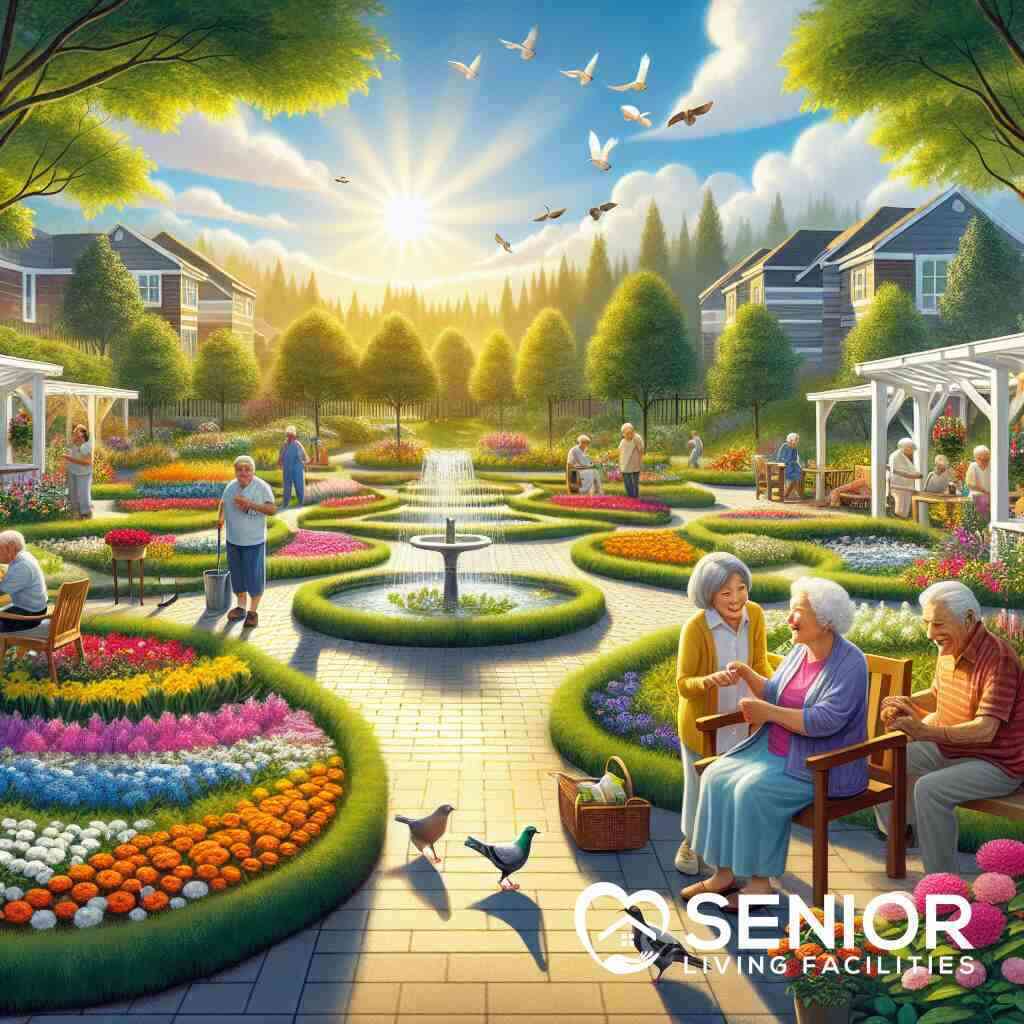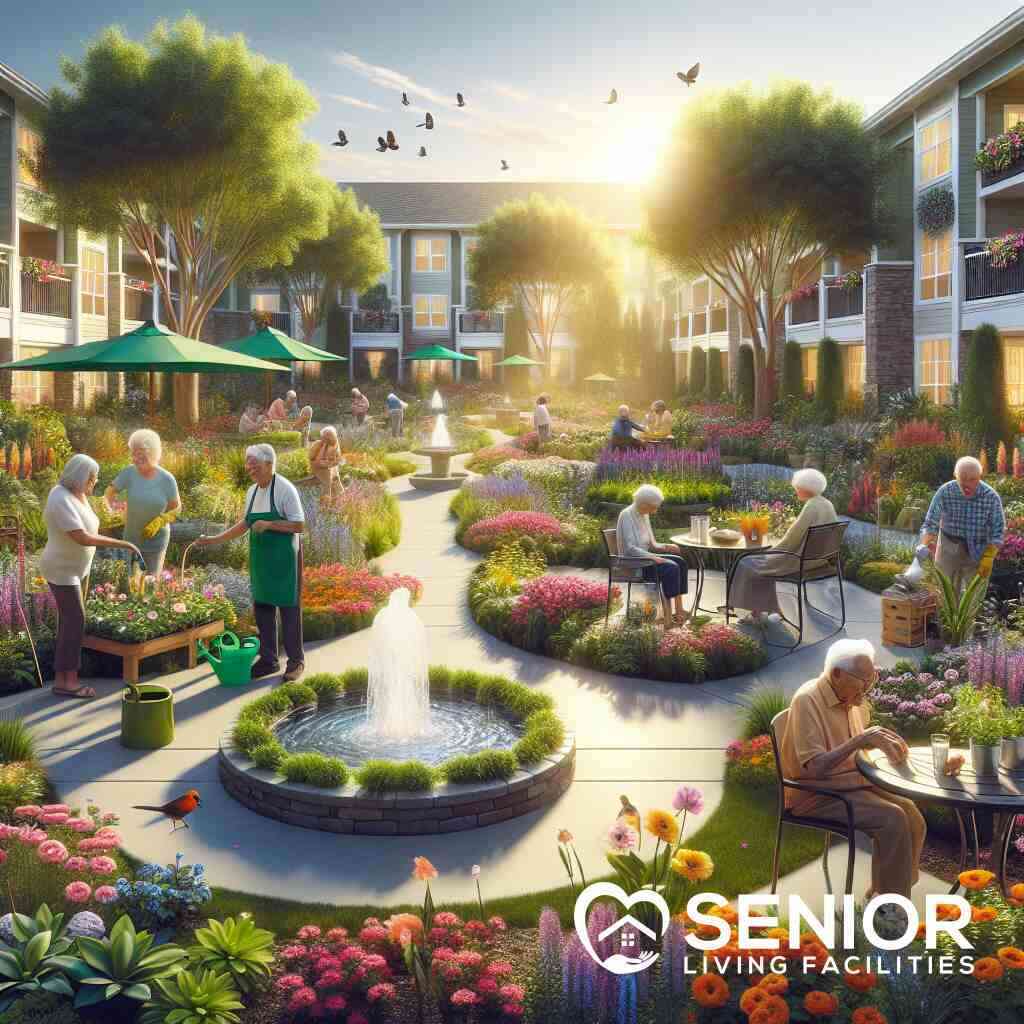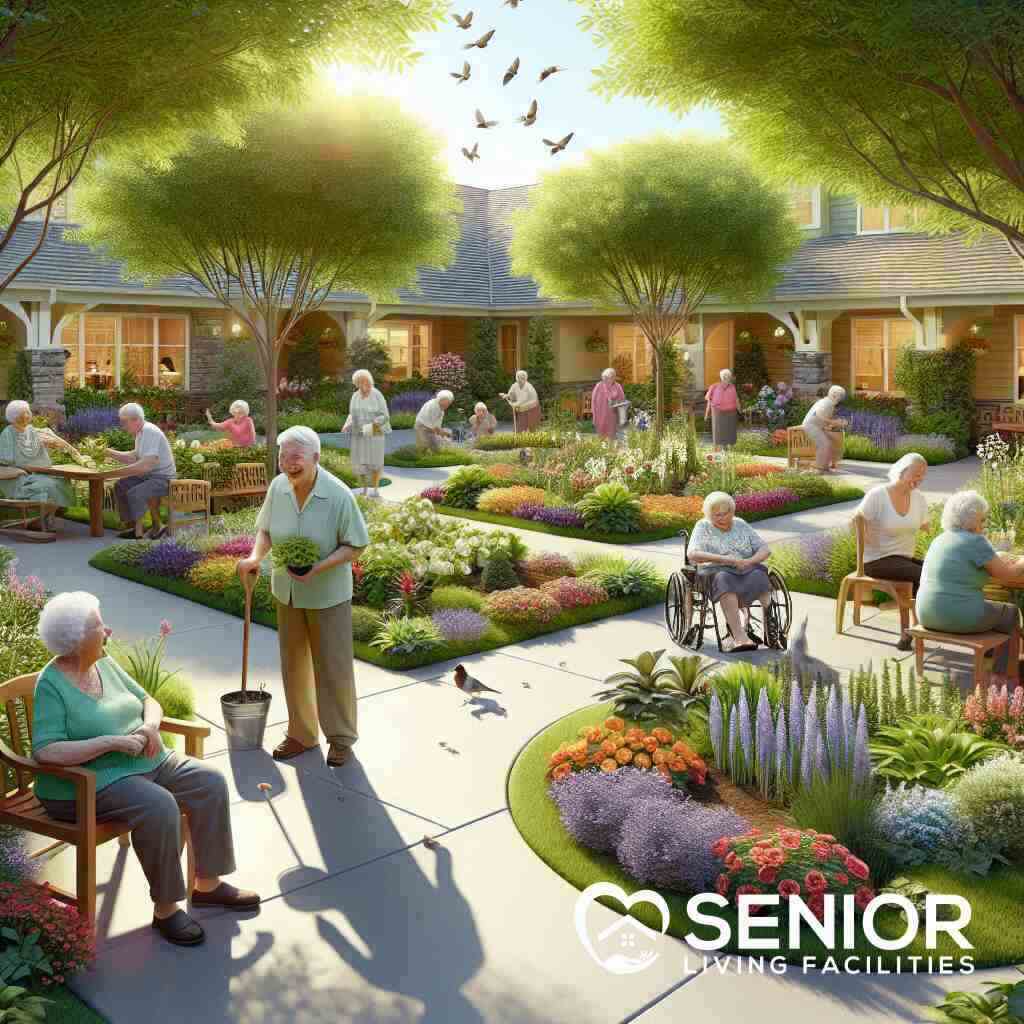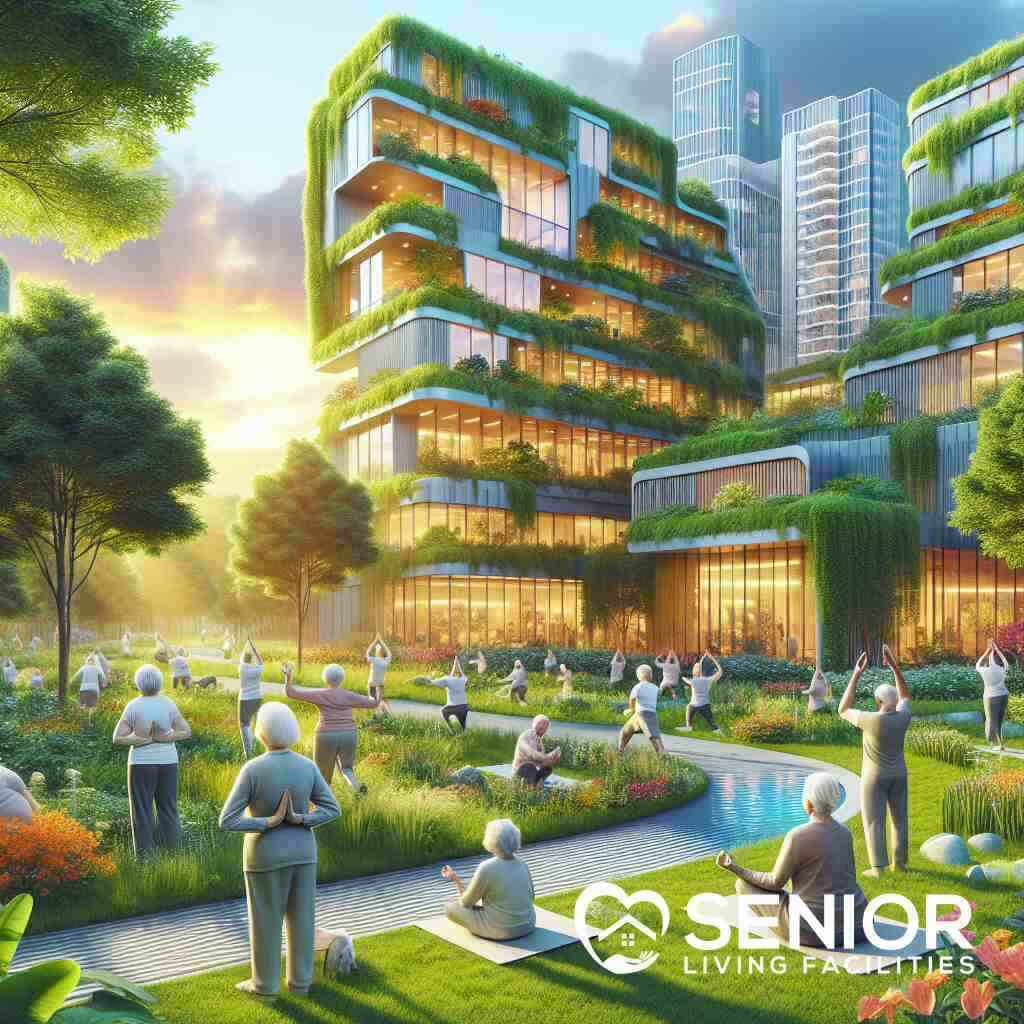
The Ultimate Guide to Assisted Living Facilitator Success
November 17, 2025
Unveiling the Landscape of Assisted Living Success
Redefining Senior Living for the Modern Age
Assisted living facilities are rapidly evolving, redefining what it means to provide exemplary care for seniors in today’s world. No longer just a place for care, these facilities have transformed into vibrant communities that prioritize personalized experiences and resident-centered care. The shift towards more dynamic environments allows seniors not only to thrive physically but also to remain socially and mentally engaged in their later years. The advent of modern technologies and innovative care solutions plays a critical role in this transformation, setting a new standard for the industry. By embracing these advancements, providers can meet the diverse needs of the aging population, ensuring they live fulfilling and meaningful lives.
Navigating the Senior Living Facility Spectrum
The journey to finding the right senior living facility can be quite nuanced, requiring a delicate balance between medical care, social activities, and personal preferences. When navigating this spectrum, it’s essential to examine the offerings of different types of communities, ranging from independent living and assisted living to more intensive nursing care. Each community presents unique characteristics and advantages that cater to distinct needs. The landscape is diverse and tailored solutions abound, such as those seen in state-specific opportunities like the assisted living advantages in California. Identifying what aligns best with an individual’s lifestyle and health requirements is paramount in ensuring satisfaction and longevity in senior care.
Key Metrics in Assisted Living Performance
Evaluating the success of an assisted living facility requires a focus on several key performance metrics that highlight both operational excellence and resident satisfaction. These metrics include resident health outcomes, staff-to-resident ratios, and efficiency of service delivery. By meticulously tracking these indicators, facilities can ensure they provide top-tier care tailored to the specific needs of their residents. Furthermore, comprehensive assessments play a significant role in identifying areas of improvement, catalyzing positive changes in daily operations. Facilities that prioritize these metrics often succeed in creating a nurturing environment conducive to fostering well-being and safety, essential components for thriving senior communities. Embedded within this evaluation process is a commitment to continuous improvement, reflecting a dedication to achieving optimal living conditions and enhancing the overall quality of life for residents.
Crafting a Resident-Centered Experience
Personalization in Senior Care
Personalization is at the core of delivering quality senior care. Each resident brings a unique set of medical, emotional, and social needs that must be meticulously understood and catered to. Tailoring care plans ensures that individuals receive the appropriate interventions that enhance their health and happiness. Assisted living facilities that prioritize personalization foster environments where residents thrive. Implementing customizable options in daily schedules, dining services, and medical interventions is fundamental. In states like Virginia, you can see an influence on personalized care in senior living in Virginia, setting benchmarks for ubiquitous practices in senior living.
Fostering Community and Security
Creating vibrant, engaging communities is essential for resident well-being. A sense of belonging contributes significantly to happiness and longevity in senior living. Senior care facilities must actively strive to foster robust community connections, promote resident safety, and ensure an all-encompassing sense of security. Incorporating spaces that encourage social interactions and leisure while maximizing safety is integral. Trust building activities and periodic feedback mechanisms enhance engagement levels. Resident safety in senior facilities pivots their experience from feeling merely cared for to that of genuine personal investment and shared community culture.
Enhancing Resident Well-being through Innovative Solutions
The pursuit of well-being in residential communities involves leveraging cutting-edge solutions that address the evolving needs of seniors while aligning with their preferences. Facilities prioritizing innovative wellness strategies see improvements in both resident satisfaction and health outcomes. Integrating technology for health monitoring, virtual socializing platforms, and personalized activity programming are just a few examples. Emphasizing redesign and adaptability ensures these communities remain contemporary and relevant. In locations like Arkansas, providers are already channeling innovative senior solutions in Arkansas, showcasing how technology-enhanced living goes hand-in-hand with flourishing senior communities. By embracing these innovations, providers can significantly impact the quality of life, ensuring residents lead active, engaged, and fulfilled lives.

Operational Excellence in Senior Care Management
Implementing Effective Care Plans
Achieving operational excellence in senior care management starts with implementing effective care plans. These plans are crucial in ensuring that each resident receives the specific attention needed to improve their quality of life. Effective care planning involves a comprehensive assessment of each resident’s physical, mental, and social needs. By tailoring these plans to individual needs, facilities can optimize resident satisfaction and health outcomes. Utilizing data-driven insights and continuous feedback loops ensures that care plans evolve in alignment with residents’ changing needs. Facilities that excel in this area often witness benefits like reduced hospital readmissions, showcasing the importance of fine-tuning care strategies.
Optimizing Team Dynamics and Leadership
Team dynamics and leadership play pivotal roles in assisted living success. A well-coordinated team ensures that responsibility is distributed effectively, enhancing overall productivity and resident care. Leaders within senior living facilities need to focus on cultivating an environment where team members feel valued and motivated. This involves regular training sessions, open communication channels, and clear role definitions. Effective community management strategies, such as those seen in New York, highlight the importance of collaborative efforts in achieving senior care excellence. By investing in leadership development and team cohesion, facilities can provide consistent and high-quality care.
Best Practices in Operational and Financial Management
Operational and financial management best practices are essential for sustainable success in senior living facilities. Facilities must maintain balances in offering high-quality services while minimizing costs. Best practices include efficient resource allocation, regular financial audits, and investing in technology that streamlines operations. A keen focus on these aspects allows facilities to enhance resident satisfaction and maintain profitability. Understanding and adhering to living facility regulations also ensure compliance and protect against potential liabilities. Ultimately, facilities that prioritize operational and financial efficiency can offer better services to their residents, resulting in improved overall satisfaction and trust within the community.
Strategies for Sustainable Growth and Innovation
Adapting to Emerging Assisted Living Trends
As the assisted living industry evolves, staying abreast of emerging trends is essential for sustainable growth. Successful facilities recognize the importance of adapting to changing demographics, preferences, and healthcare needs. Embracing trends such as person-centered care and integrated technology helps facilities remain competitive. In states like Georgia, experts are exploring how trends in assisted living in Georgia are reshaping the landscape. By strategically aligning with these trends, facilities ensure they cater to modern expectations, resulting in enhanced resident engagement and satisfaction.
To thrive, administrators must immerse themselves in the latest industry insights, encouraging a culture of curiosity and adaptability among staff. Staying informed about policies and market shifts enables timely responses to potential challenges. Forward-thinking facilities are those that actively foster an environment of continuous innovation. By understanding the pulse of the market, they can develop proactive strategies that address an ever-evolving landscape, ensuring their services meet the current and future needs of their residents.
Leveraging Technology for Senior Care
Technology integration is revolutionizing the senior care industry. Innovative tech solutions, from health monitoring devices to virtual social platforms, streamline operations and improve resident outcomes. Assisted living facilities that successfully integrate these technologies have reported enhanced efficiencies and resident satisfaction. Areas like navigating senior care near Ohio showcase how technology adoption can transform routine care.
Facilities stand to benefit from implementing digital tools that enhance communication between staff, residents, and families. Real-time health monitoring and data analytics inform personalized care plans, leading to more precise interventions. Furthermore, technology can reduce the administrative burden on staff, enabling them to focus more on direct resident care. By investing in the latest technological advancements, senior living communities can tailor their environments to foster independence and autonomy, ultimately boosting quality of life.
Innovative Marketing in the Senior Living Industry
In a competitive market, innovative marketing strategies are crucial for attracting and retaining residents. Facilities must employ creative campaigns that highlight their unique offerings and foster a compelling brand identity. Effective marketing not only showcases the practical benefits of a facility but also the lifestyle and community engagement it offers. Learning from regions like Florida, where senior community insights in Florida spotlight strategic outreach efforts, can provide valuable lessons.
Storytelling and content marketing play pivotal roles in connecting emotionally with potential residents and their families. Showcasing resident testimonials and success stories effectively communicates a facility’s value proposition. Furthermore, digital channels, including social media and websites, provide platforms for reaching wider audiences. By utilizing data-driven insights, facilities can tailor their marketing efforts to target specific demographics, ensuring messages resonate with the intended audience. An innovative marketing approach secures a tangible connection with prospective residents, paving the way for lasting relationships and community building.
Charting the Future of Assisted Living Facilities
Understanding and Navigating Assisted Living Regulations
The landscape of assisted living is significantly influenced by the regulatory frameworks that guide operational standards. Facilities must navigate complex guidelines to remain compliant and maintain high-quality care for residents. Understanding the intricacies of these regulations is paramount in ensuring the safety and well-being of seniors. Local, state, and federal mandates often intersect, requiring administrators to stay vigilant about policy updates. Compliance not only safeguards the facility’s reputation but also builds trust within the community by guaranteeing a standardized level of care. Regular training sessions for staff and a robust compliance strategy are indispensable to stay ahead in this evolving regulatory environment. Moreover, facilities that effectively navigate these regulations are better positioned to implement assisted living strategies in Indiana, ensuring both excellence in service delivery and operational integrity.
Creating Inclusive Communities for Seniors
Inclusive communities in assisted living settings are pivotal for fostering a sense of belonging among residents. These communities prioritize diversity, ensuring that every resident feels valued, respected, and connected. A successful approach to inclusivity involves integrating varied cultural, social, and recreational programs tailored to the diverse population of seniors. Engagement activities that reflect the unique backgrounds and interests of residents help in building a cohesive and vibrant community. Furthermore, developing policies that promote equity and inclusivity within staff interactions is equally essential. Embracing open communication channels and initiating routine resident feedback sessions support these efforts. Comprehensive inclusivity strategies significantly enhance the quality of life and satisfaction levels among seniors, embodying forward-thinking senior housing success.
Future Outlook: Trends and Predictions
The future of assisted living facilities is brimming with potential, driven by emerging trends and innovations. Predictive analytics and AI-driven tools are revolutionizing how care is personalized, allowing for more proactive health management. Additionally, the integration of sustainable practices and technology-fueled connectivity is expected to shape the infrastructure and operations of senior living facilities. The demand for communities that cater to specific health conditions or lifestyle preferences is on the rise, signaling a shift towards specialized care models. As facilities strive to meet these evolving demands, understanding future trends for assisted living is vital for staying competitive. These trends promise not only to transform resident experiences but also to redefine what senior living will look like in the coming decades, ensuring that facilities are equipped to support the aging population with dignity, comfort, and innovation.

The Capstone of Assisted Living Success
Summing Up Key Strategies for Stakeholders
The journey to mastering assisted living success involves embracing a multidimensional approach. By aligning with effective assisted living success strategies, facilities can cultivate environments where residents not only live but thrive. Key strategies involve meticulous care plan implementation, optimizing senior living operations, and integrating innovative senior living solutions. Engaging with comprehensive operational strategies ensures sustainability and fosters quality care throughout all facets of a facility. Utilizing the latest technologies and maintaining a proactive stance on emerging trends allows stakeholders to navigate the dynamic landscape deftly.
Achieving enhanced resident satisfaction also requires commitment to personalization and a focus on delivering enriching experiences within senior care communities. Facilities should continuously seek feedback to refine their offerings, adapting to evolving needs and expectations. Leadership in assisted living demands a strategic vision, one that incorporates seamless management of human, financial, and technological resources, ensuring every resident enjoys a superior quality of life. To keep abreast with evolving resident needs, stakeholders should delve into constant learning and improvement, championing a culture that values feedback-driven growth. This approach resonates with both residents and their families, reinforcing trust and building a robust reputation.
Envisioning a New Era for Senior Living Facilities
Looking forward, the future of senior living facilities promises vast opportunities for transformation rooted in innovative senior living solutions. Key predictions point to more integrated, technology-driven environments where the unique preferences of aging populations are prioritized. Facilities dedicated to aging community engagement will see enhanced sense of community and wellness among their residents. This shift is apparent as facilities increasingly adopt tech solutions aimed at improving connectivity and health outcomes. The concept of personalized facilities for senior living is gaining momentum, with more communities seeking to cater to individualized lifestyles and medical needs, thus driving the demand for specialization.
The infusion of data analytics will continue to shape resident engagement and health strategies, empowering facilities to anticipate and swiftly respond to needs.
Additionally, well-being in residential communities will drive design and operational changes, promoting spaces that offer a holistic approach to elder care. By embracing change and innovation, facilities are not just responding to current demands but are also preparing for future challenges and opportunities. The realization of these trends is not merely a projection; it’s an actionable blueprint for those who seek to lead the next phase of senior living evolution. By envisioning this new era, stakeholders are setting the stage for thriving communities that support aging with dignity, respect, and personalized care.
Frequently Asked Questions
Question: How does the Senior Living Facilities platform help in identifying the best senior living options available across the US?
Answer: Senior Living Facilities offers a comprehensive platform that simplifies the process of finding the ideal senior living community. Utilizing our extensive database, you can search for senior living facilities in all 50 US states by entering your location. The platform allows you to compare various facilities based on level of care, activities offered, medical services, and more. This ensures you make informed decisions that align with individual needs and preferences, enhancing resident satisfaction and well-being.
Question: What are some key operational strategies emphasized in The Ultimate Guide to Assisted Living Facilitator Success, and how can Senior Living Facilities assist in implementing them?
Answer: The Ultimate Guide to Assisted Living Facilitator Success highlights several operational strategies vital for effective assisted living administration, such as optimizing senior living operations and implementing care plans effectively. Senior Living Facilities supports these strategies by offering resources and connections to top-notch facilities known for excellence in operational and financial management. We focus on fostering inclusive senior communities and using technology to maximize resident well-being, ensuring a high standard of living for seniors.
Question: How does personalization play a role in the services provided by Senior Living Facilities?
Answer: Personalization is central to the services offered by Senior Living Facilities. We understand the importance of tailoring care plans and facility features to meet the unique needs of each resident. Our platform highlights facilities that prioritize personalized care in senior living, offering customizable options in daily schedules, dining services, and medical interventions. This personalized approach fosters environments where seniors can thrive, enhancing quality of care and resident satisfaction.
Question: Can you explain how Senior Living Facilities incorporate emerging senior care technology trends to improve resident engagement and care outcomes?
Answer: At Senior Living Facilities, we recognize the transformative power of senior care technology and continuously incorporate these trends to enhance care outcomes. Our partner facilities leverage innovative solutions like health monitoring devices and virtual platforms to streamline operations and improve resident engagement. These technologies enable real-time health monitoring, facilitating personalized care plans that boost resident autonomy and satisfaction. By staying at the forefront of technological advancements, we ensure our facilities offer cutting-edge solutions for modern senior living needs.
Question: How do Senior Living Facilities ensure compliance with assisted living regulations to safeguard resident well-being?
Answer: Compliance with assisted living regulations is a top priority for Senior Living Facilities. Our platform provides access to facilities that are well-versed in navigating the complex local, state, and federal guidelines that govern senior care. By emphasizing training for assisted living staff, implementing best practices in senior care, and maintaining robust compliance strategies, we ensure that the facilities we feature adhere to high standards of safety and well-being for all residents.


